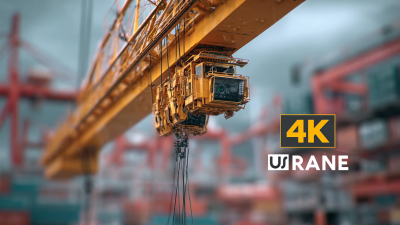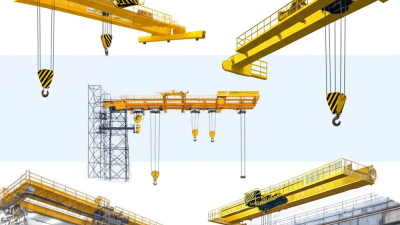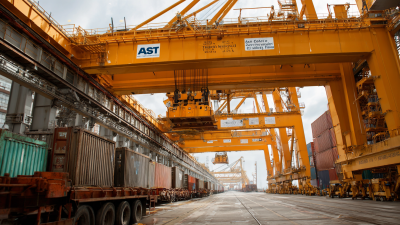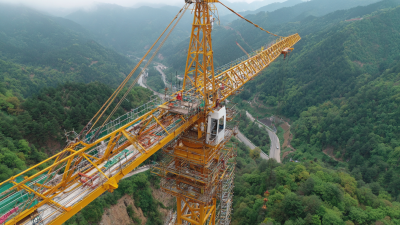Inquiry
Form loading...
-
Phone
-
Wechat

-
Whatsapp

In today's manufacturing and logistics industries, optimizing Gantry Crane operations is crucial for enhancing both efficiency and safety. According to a report by the World Cranes Market Research, the global crane market is projected to reach $49 billion by 2025, with Gantry Cranes representing a significant portion of this growth due to their versatility and adaptability in various environments.
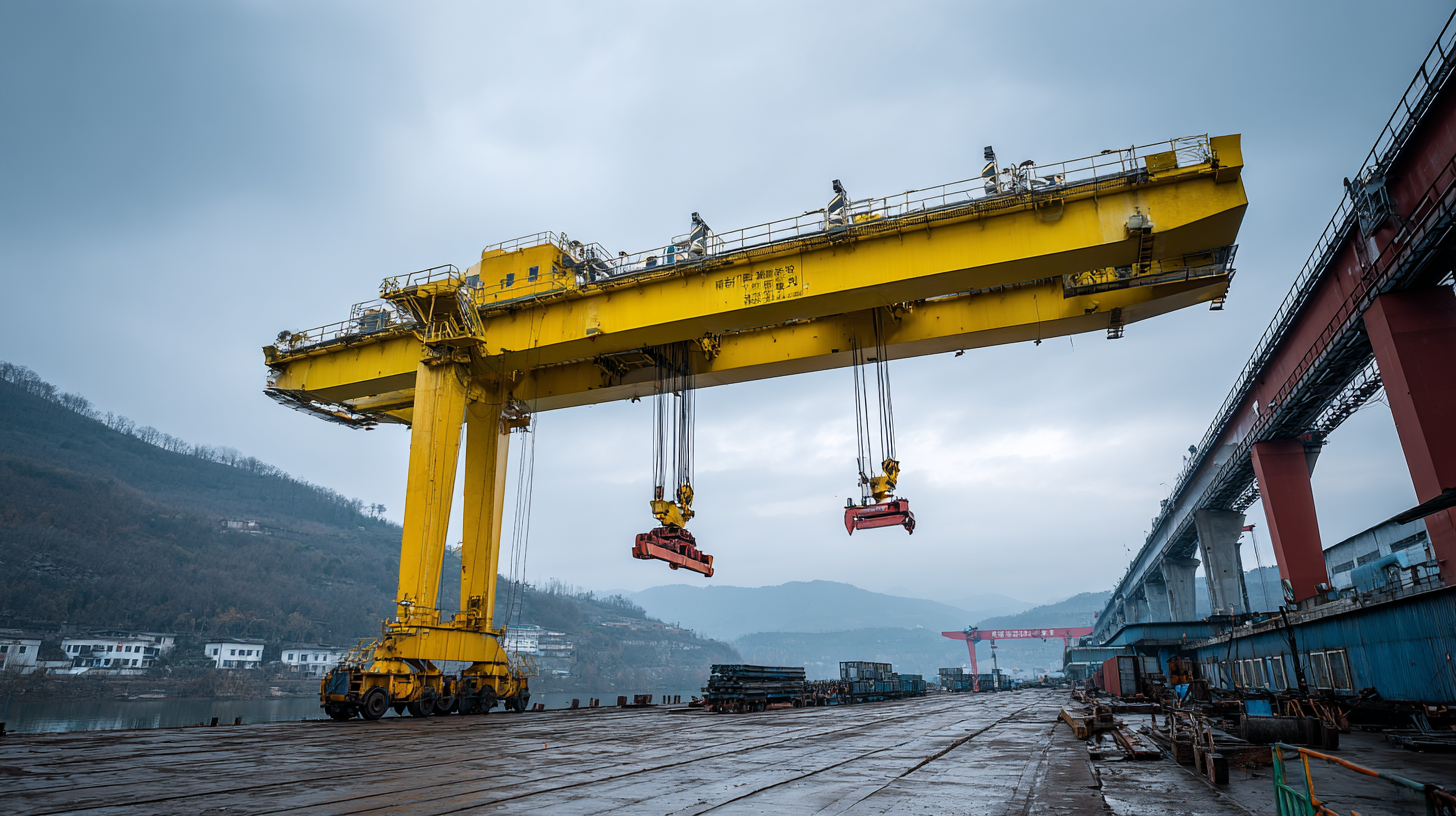
However, while the benefits of Gantry Cranes are clear, many organizations still face challenges in their operational efficiency. A survey by the National Safety Council revealed that material handling equipment, including Gantry Cranes, accounts for nearly 30% of workplace injuries, emphasizing the need for improved safety protocols.
By implementing best practices for Gantry Crane operations, companies can not only reduce downtime and operational costs but also create a safer working environment, thus paving the way for sustainable growth in an ever-evolving industry landscape.
Assessing current gantry crane operations is crucial for identifying improvement opportunities that can lead to enhanced efficiency and safety. A study by the Crane Manufacturers Association of America (CMAA) indicates that optimizing crane operations can increase productivity by 20% to 30% when current practices are critically evaluated. Companies often overlook basic maintenance checks, which can lead to unexpected downtime. Regular inspections and adherence to maintenance schedules not only improve operational reliability but also play a pivotal role in safety compliance, thereby decreasing accident rates by as much as 15% according to the National Institute for Occupational Safety and Health (NIOSH).
Furthermore, integrating technology such as automated load monitoring systems can provide real-time data on crane performance and load conditions. A report from the International Journal of Industrial Ergonomics highlights that utilizing advanced analytics can further streamline operations, reducing energy consumption by up to 25%. The use of data-driven decision-making allows operators to pinpoint inefficiencies in real-time, leading to smarter operational choices. By investing time in assessing existing gantry crane functionalities, organizations can foster an environment geared toward continual improvement, maximizing both safety and operational output.
Implementing smart technology in gantry crane operations can significantly enhance monitoring and control, leading to increased efficiency and safety. Integrating sensors and IoT devices allows for real-time monitoring of crane performance, load weights, and environmental conditions. This data can be transmitted to a centralized system, enabling operators to make informed decisions quickly and minimizing the risk of accidents caused by human error. Smart technology also facilitates predictive maintenance by analyzing equipment performance trends, allowing for timely interventions that prevent downtime.

Furthermore, advanced control systems equipped with AI algorithms can optimize crane movements by determining the best paths and speeds for various operations. By automating certain functions, such as load adjustments and positioning, these smart systems reduce the likelihood of operational mishaps while enhancing overall throughput. The result is a safer working environment where operators can focus on strategic decision-making rather than managing manual controls. Through the integration of smart technology, businesses can not only streamline their operations but also ensure the safety of their workforce and equipment.
Establishing regular training programs for crane operators and maintenance staff is essential for optimizing gantry crane operations. Continuous education enhances the knowledge and skills necessary to operate cranes safely and efficiently. These training sessions should cover various topics, including the fundamentals of crane mechanics, load management, and safety protocols. By regularly updating training materials and incorporating real-life scenarios, operators can stay informed about best practices and potential hazards.
Furthermore, maintenance staff must also receive specialized training to ensure the equipment is in top condition. Regular inspections and understanding of maintenance procedures help prevent mechanical failures that could lead to accidents or downtime. By fostering a culture of safety and competence through ongoing training, organizations can significantly reduce risks associated with crane operations. Ultimately, investing in the development of both operators and maintenance personnel leads to improved overall productivity and a safer working environment.
Developing a comprehensive safety protocol for gantry crane usage is essential to ensure the well-being of operators and the surrounding workforce. First and foremost, a thorough assessment of risks associated with gantry crane operations should be conducted. This includes identifying potential hazards such as overhead obstructions, ground surface conditions, and the physical capabilities of operators. A risk evaluation enables organizations to tailor their safety protocols to the specific operational environment, minimizing the potential for accidents.
Training is another critical element of an effective safety protocol. Operators must undergo rigorous training that encompasses not only the mechanics of operating the gantry crane but also emergency response procedures. Regular drills and assessments can reinforce safe practices and ensure that employees are comfortable with the equipment. Additionally, clear signage and communication systems should be established to facilitate safe interactions between crane operators and ground personnel. By instituting these protocols, organizations can significantly enhance the safety and efficiency of their gantry crane operations.
Routine maintenance is crucial for the longevity and efficiency of gantry crane operations. According to the International Crane Organization, maintenance can extend the operational life of equipment by up to 30%. By implementing a scheduled maintenance program, operators can identify potential issues before they escalate, thus preventing costly downtimes and ensuring high safety standards.
Tips for optimizing your maintenance schedule include keeping accurate logs of all maintenance activities and inspections. Regularly reviewing these logs can help identify patterns in repairs, allowing for preemptive actions. Another key tip is to establish a relationship with a qualified maintenance provider who understands the specific needs of your gantry crane, ensuring that all repairs and checks are performed to a high standard.
It's also advisable to involve your operators in the maintenance process. They are often the first to notice irregularities in the crane's performance. Providing training on basic maintenance checks can empower them to spot issues early, ultimately maintaining a safer and more efficient operational environment. Emphasizing safety and efficiency through routine maintenance not only boosts productivity but also fosters a culture of responsibility within the workplace.


